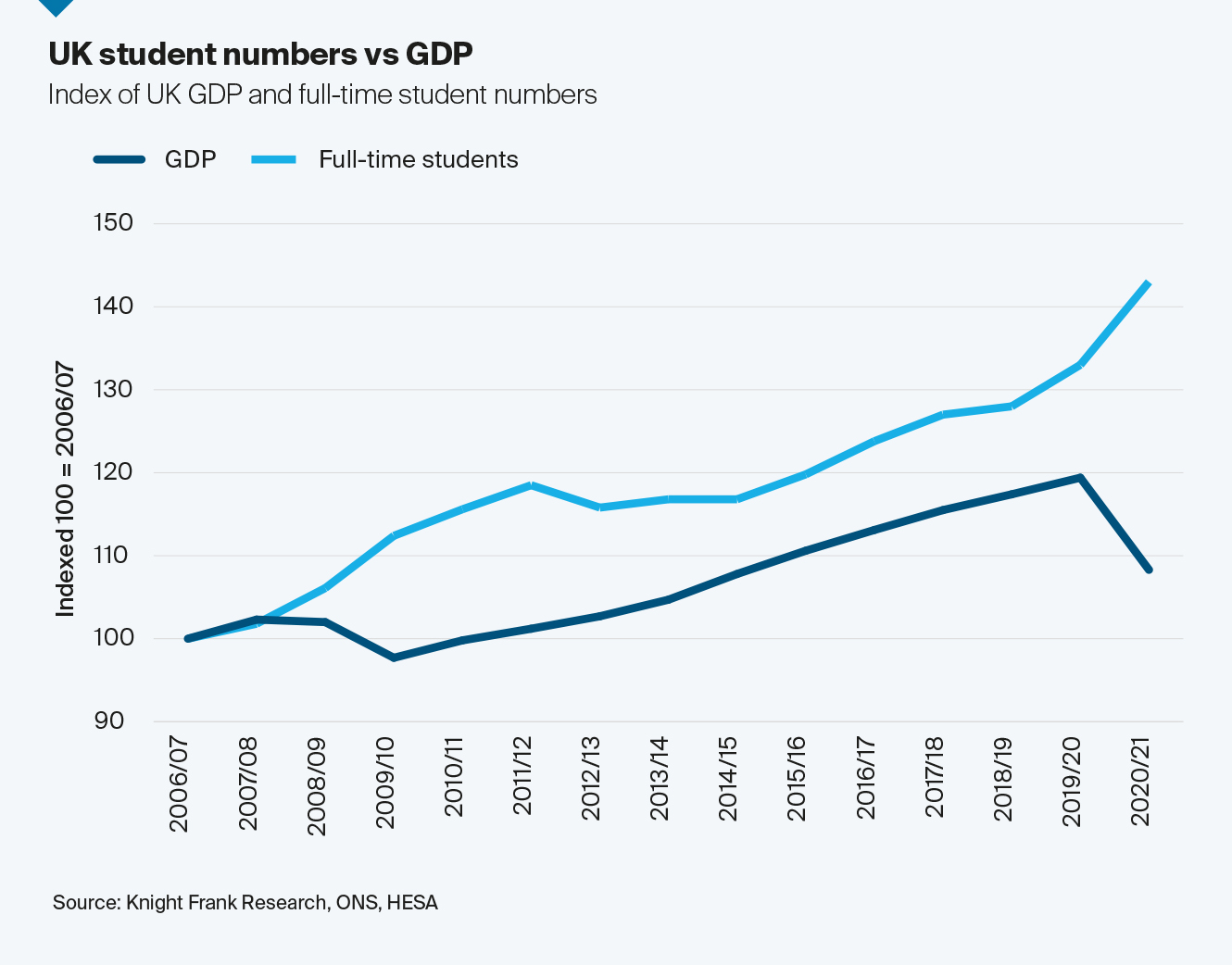Residential investment: Living sectors at the forefront of investor minds
Against a challenging economic backdrop, investing in sectors driven by demographic rather than economic shifts is a logical approach.
1 minute to read
While not immune to the economic environment, the Living sectors are proving their resilience.
Indeed, there remains a compelling investment case for those assets that benefit from changing ways of living, in terms of both demographics and technology.
Demand for student living typically increases during economic dislocations as people return to education looking to upskill, and more college leavers choose to attend university before entering the workplace.

Other residential offerings will continue to face an excess of demand to supply. Affordability constraints in the private sales market (driven by higher mortgage rates), for example, will continue to drive solid rental demand and underpin expectations of robust rental growth, supporting the Build to Rent market. In areas with an ageing population, demand for seniors housing will continue to grow.
It would be amiss to suggest that 2022 passed by without any headwinds; a sharp increase in debt costs resulted in a softening of yields across the Living sectors in the closing quarter. We expect a period of exploration for yields in 2023 as these headwinds settle.
While strong fundamentals underpin Living investments, the sector will face challenges in the coming months on both operational and investment grounds. Rising energy costs and uncertainty surrounding construction and financing costs are concerns.
However, longer-term, as more stable market conditions emerge into 2023 and beyond, the Living sectors will remain one of the more favoured sectors for investment.
Read more or get in contact: Ollie Knight, head of residential development research
Subscribe for more
For more market-leading research, expert opinions and forecasts, sign up below.
Subscribe here